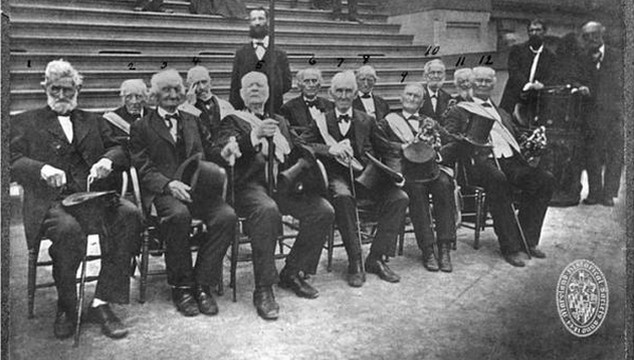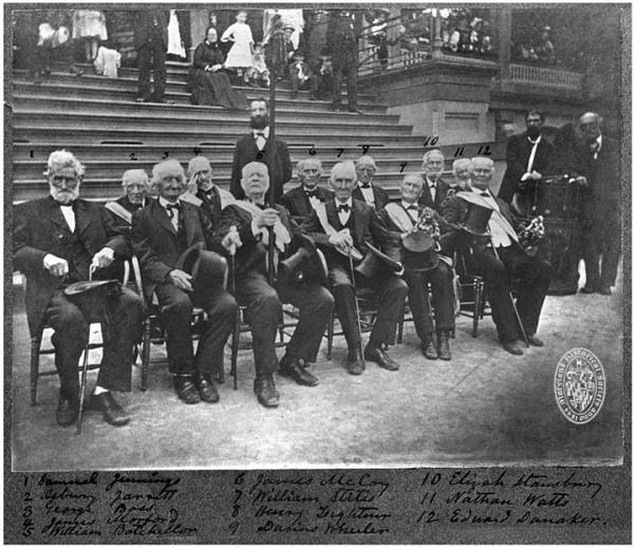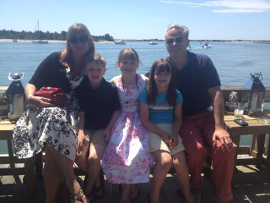 The Old Defenders (photo from the Maryland Historical Society)
The Old Defenders (photo from the Maryland Historical Society)
Helping busy families relax and reconnect through travel is one the main reasons we do what we do at Southern Girl Travel. But, I am often struck by those unexpected pleasures of travel that go far beyond mere relaxation.
We have a circle of close friends who live in the Baltimore area and we are active with a non-profit headquartered there. As such, we travel to Baltimore a number of times a year, sometimes more. While Baltimore does not immediately come to mind for most folks as a U.S. vacation paradise, there are great things to enjoy around Baltimore, especially from a historical perspective.
Listen for it…
ugh comes the sigh from the kids – he said historical perspective.
Just saying travel and history in the same sentence may bring a sigh from families with visions of dad dragging the family to battlefields and monuments across the southeast.
I like to think our kids don’t offer up the same sigh with our histro-centric travels, as we tend to give a human twist and combine those travels not just with learning but with hands on experiences we all can relate to: like standing at Gettysburg on the farthest point of Pettigrew’s advance or pointing towards the spot in Manassas where Jackson stood like a stone wall.
The War of 1812 seems like a mere footnote to U.S. history these days, though it was as a result of the War’s Battle of Baltimore in September of 1814 that Francis Scot Key penned the poem, the Defense of Fort McHenry, which would go on to become the U.S national anthem, the Star Spangled Banner.
I happened to be visiting Baltimore last weekend during the 200th anniversary celebrations commemorating the Battle of Baltimore. There were tons of things to do associated with the celebration, but the most notable moment for me came on a visit to a church that my friends attend.
It was there that I realized that the Battle of Baltimore is still a real thing for many of the folks there, and not at all because of the Star Spangled Banner.
Why then?
The Anglican priest who delivered the sermon spoke eloquently about the courage of ordinary citizens not seeking glory in battle, but simply defending homes and families against a hostile invader.
 The Old Defenders of Baltimore
The Old Defenders of Baltimore
Those old men in that photo are known as the Old Defenders, and they were survivors of that battle photographed nearly 3/4s of a century after 1814.
Two centuries after the Battle of Baltimore, the priest I heard said of these men:
Ordinary men – cobblers, grocers, clerks, lawyers, printers, farmhands, shipwrights – picked up muskets they were ill-trained to use and went off to face the worst that the finest army and the most powerful navy in the world had to offer. Very few of the folk who watched those tradesmen and farmers shamble out of town expected to see them return triumphant. Indeed, few expected to see them return at all.
Had I missed that sermon, I would have missed the reality of the Battle of Baltimore and one of the real and sometimes unexpected pleasures of travel:
Glimpsing the human experience of particular people, in particular places.
Travel can connect us with the experiences of being human on the most intimate levels. It can take us back in time and help us to know ourselves and those around us better.
Don’t let those kids sigh “ugh” when the subject of history and travel comes up. Just do it right, and don’t forget to:
Relax…you CAN get there from here!
“The Battle of Baltimore was not a Thermopylae, Marathon, Agincourt, Waterloo, York Town or Gettysburg. It was was a small, relatively inconspicuous action in a small, relatively inconspicuous war. It is doubtful whether it changed the course of history. Even had Britain triumphed overwhelmingly it is unlikely that it would have had the stomach to master its former American colonies. But the number of troops engaged and its impact on world history is not the important thing about the Battle of Baltimore. Defenders’ Day doesn’t mark the Battle of Baltimore as a great victory – although victory it was. In truth, it marks a day upon which a group of very ordinary people showed quite extraordinary courage in defense of their fellow citizens.
The military paintings that grace our nation’s art galleries portray noble-looking, straight-backed men, elegantly uniformed, sabers and muskets ready, jaws clenched, resolutely preparing to dispatch the enemy. But this isn’t really what happened at the Battle of Baltimore.
Ordinary men – cobblers, grocers, clerks, lawyers, printers, farmhands, shipwrights – picked up muskets they were ill-trained to use and went off to face the worst that the finest army and the most powerful navy in the world had to offer. Very few of the folk who watched those tradesmen and farmers shamble out of town expected to see them return triumphant. Indeed, few expected to see them return at all.
It is humbling to realize that our fellow citizens who marched out of town to meet the British 180 years ago were well aware of the tremendous odds ranged against them. They, too, knew they had little hope of victory. They marched of town dressed in their Sunday best, not because they were foolish dandies and wanted to show off, but because even the slightest wound on the battlefield could result in a slow and agonizing death. Freshly laundered clothes gave them a somewhat better chance of survival.
On September 12th two centuries ago God inspired ordinary men to heroism of the sort displayed by Gideon, Samson and David. Like their Israelite counterparts they weren’t seeking glory, they were simply defending their loved ones, their neighbors
and their homes. They were, in fact, obeying the words of Jesus recorded in St. John’s Gospel: “This is my commandment, That ye love one another, as I have loved you. Greater love hath no man than this, that a man lay down his life for his friends.”
AMEN.
 Hi! I'm Jennifer Newsome and I own and operate Southern Girl Travel with some help from my husband, Mark, and our three kids. This shot was taken in beautiful
Hi! I'm Jennifer Newsome and I own and operate Southern Girl Travel with some help from my husband, Mark, and our three kids. This shot was taken in beautiful 